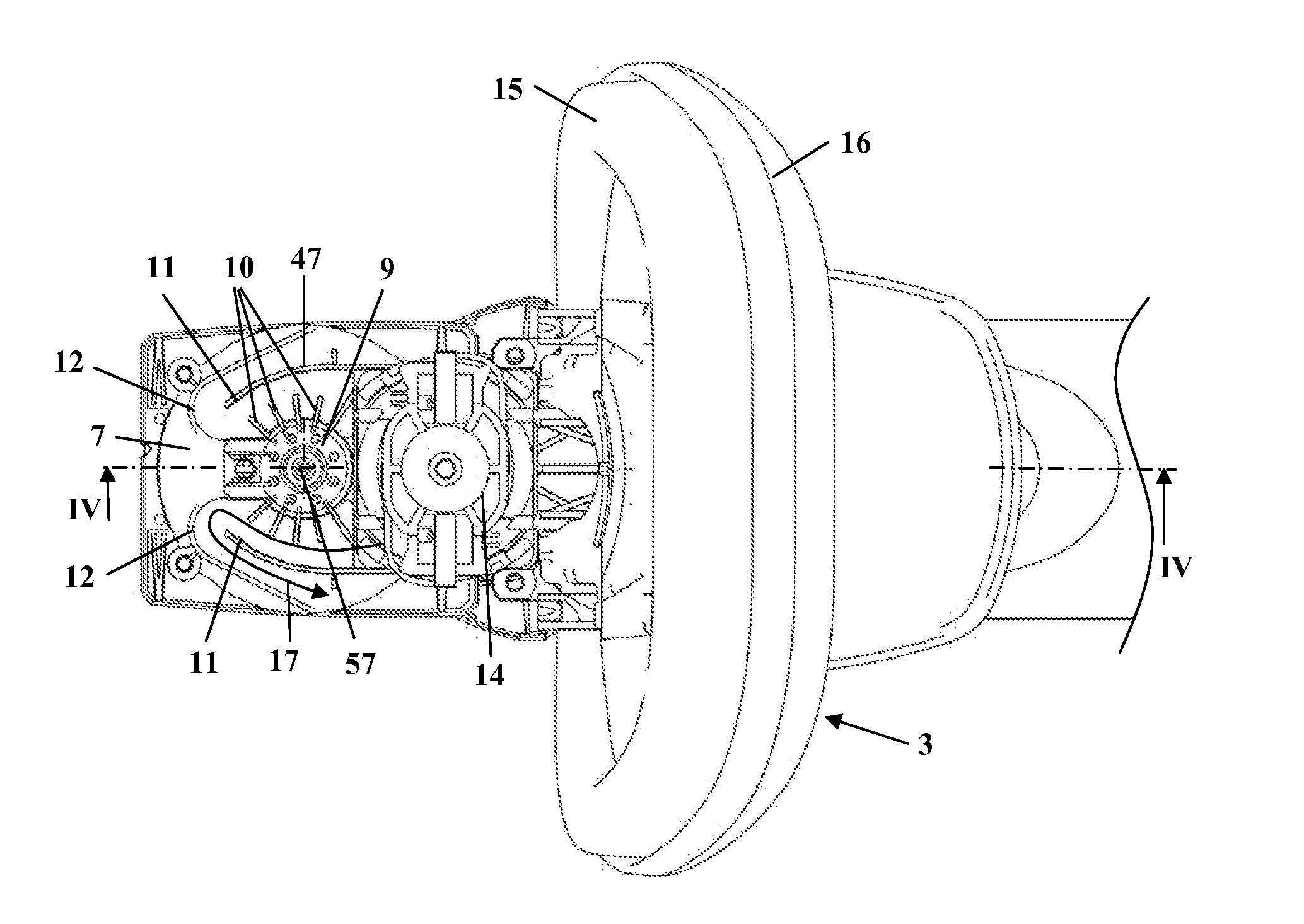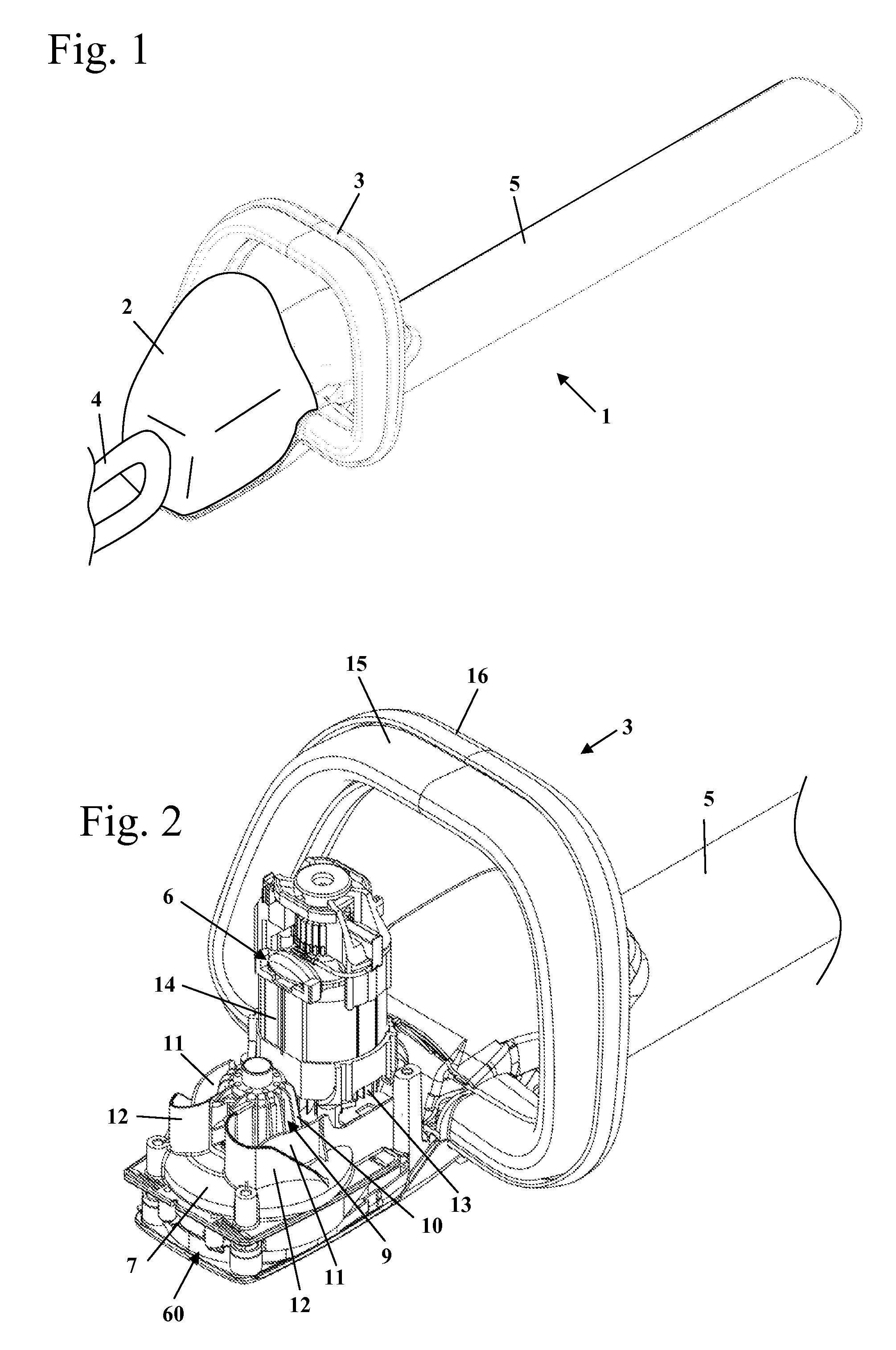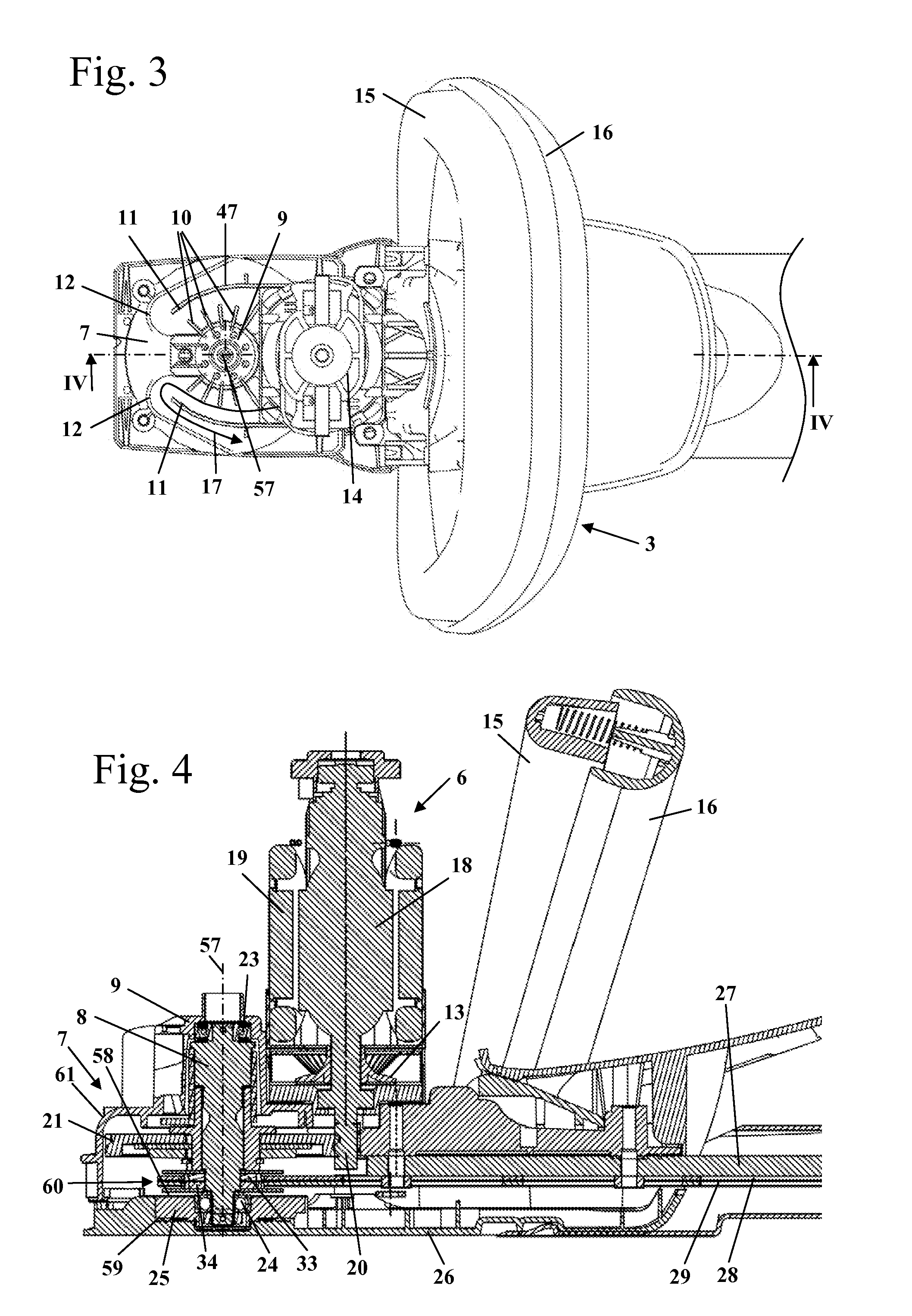Hand-held power tool
a power tool and hand-held technology, applied in the field of hand-held power tools, can solve problems such as damage or destruction of the power tool housing, and achieve the effects of reducing the size of the power tool housing, and ensuring the safety of the tool
- Summary
- Abstract
- Description
- Claims
- Application Information
AI Technical Summary
Benefits of technology
Problems solved by technology
Method used
Image
Examples
Embodiment Construction
[0024]FIG. 1 shows as an embodiment of a hand-held power tool a hedge trimmer 1. The configuration of the present invention can however also be used for other hand-held power tools, in particular hand-held power tools with an electrical drive motor.
[0025]The hedge trimmer 1 has a power tool housing 2, only schematically shown in FIG. 1, on which a rear handle 4 is arranged. At the end of the power tool housing 2 opposite the handle 4, a tool member projects forwardly, i.e., a cutter bar, that in the illustration of FIG. 1 is sheathed by a protective cover 5. In the area of the attachment of the cutter bar to the power tool housing 2, a bow-shaped grip 3 is secured to the power tool housing 2.
[0026]As shown the FIG. 2, the bow-shaped grip 3 is of a two-part configuration and has a first grip part 15 and a second grip part 16. The first grip part 15 is pivotably supported on the second grip part 16, is spring-loaded relative to it, and serves as a safety feature. When the two grip par...
PUM
 Login to View More
Login to View More Abstract
Description
Claims
Application Information
 Login to View More
Login to View More - R&D
- Intellectual Property
- Life Sciences
- Materials
- Tech Scout
- Unparalleled Data Quality
- Higher Quality Content
- 60% Fewer Hallucinations
Browse by: Latest US Patents, China's latest patents, Technical Efficacy Thesaurus, Application Domain, Technology Topic, Popular Technical Reports.
© 2025 PatSnap. All rights reserved.Legal|Privacy policy|Modern Slavery Act Transparency Statement|Sitemap|About US| Contact US: help@patsnap.com



